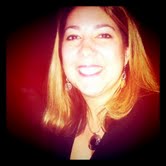At a surprisingly early age, perhaps nine or ten, I became the author of my own spiritual narrative, meaning, I took it upon myself to initiate and pursue the deep mystery of my faith. Weekly Mass was an event, not an obligation, and something to which I attended without my family. The singleness of my worship at such a young age drew stares and whispers from those families who had arrived in tact. And while I was not unaware of their curiosity, I found it easier to lose myself in the absolute wonder of my environment. This was the world to which I belonged. I was at once home and alive in a devotion filled with sacramentals, those objects of religious piety that created a force field of God’s protection around me.
While the mystery of God’s love enveloped and graced my adolescence, a slow and creeping suspicion began to take hold of my faith. Because of my “girlishness,” I was barred as an alter server, and I began to absorb my otherness. I worried about my difference, and began to question the fairness of God. Telegraphic messages of inferiority caused me great confusion. The implicit reality that as female I was ontologically challenged, slowly sifted its way into my psyche and I would argue, my soul as well.
As a budding young feminist, what I found within the teachings of the church, either implicit or explicitly, did not coincide with what I felt to be the inner me. On the cusp of adulthood, the collision between self and Church [read as God] was inevitable. The catechetical formation of my youth, of coming forth equally male and female in the image and likeness of God seemed like a childish myth and certainly not the reality of the andocentric church to which I was now departing.
Fast forward twenty years, and I cautiously found myself back in the Catholic Church, only this time in the arms of feminist theologians. I was hooked. Their writings informed my life choices, directing me towards my current doctoral pursuit. Yet I have found the academic arena is able to shield and protect me from the pain I continue to feel within the institutional church. To demonstrate the interweaving of the challenges and nourishment I experience as a Catholic I addressed above, I would like to share with you the following story. Continue reading “Feminism, Ontology and the Priesthood of all Believers”
 I try to avoid watching too much television – it feels like there are so many other things I should be focused on; but I was quite engrossed in the show Big Love during its run on HBO. Its concluding season was by far my favorite because of its focus on women and faith. In one of the final episodes the character Barbara Hendrickson struggled with whether or not to be baptized into a new church and it was a struggle I identified with greatly. Although her faith had changed and she no longer felt connected to the doctrine of her previous church, moving on to a new community that fit her beliefs meant abandoning her family.
I try to avoid watching too much television – it feels like there are so many other things I should be focused on; but I was quite engrossed in the show Big Love during its run on HBO. Its concluding season was by far my favorite because of its focus on women and faith. In one of the final episodes the character Barbara Hendrickson struggled with whether or not to be baptized into a new church and it was a struggle I identified with greatly. Although her faith had changed and she no longer felt connected to the doctrine of her previous church, moving on to a new community that fit her beliefs meant abandoning her family.



